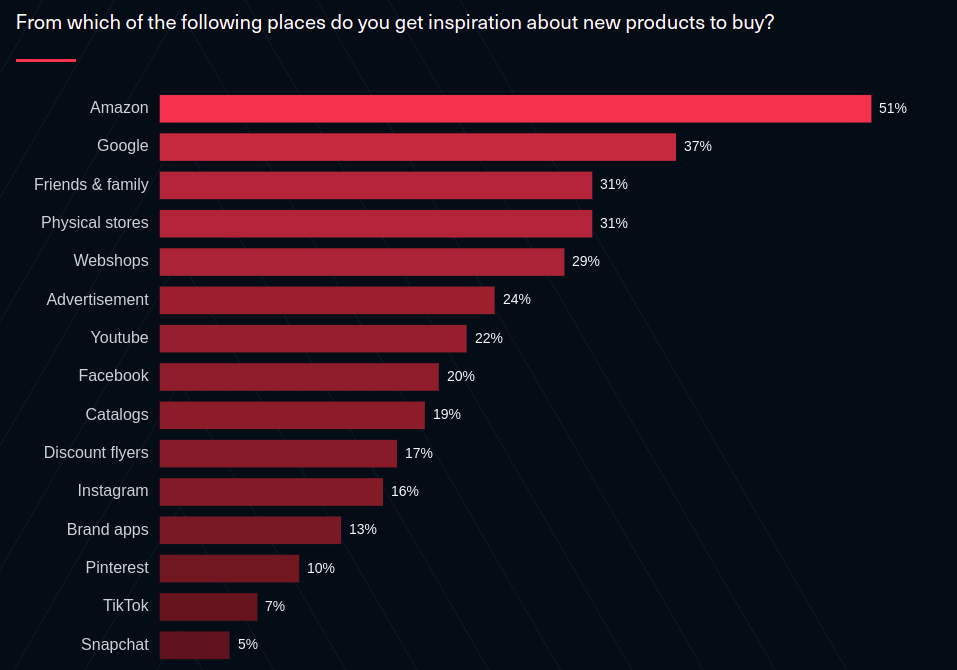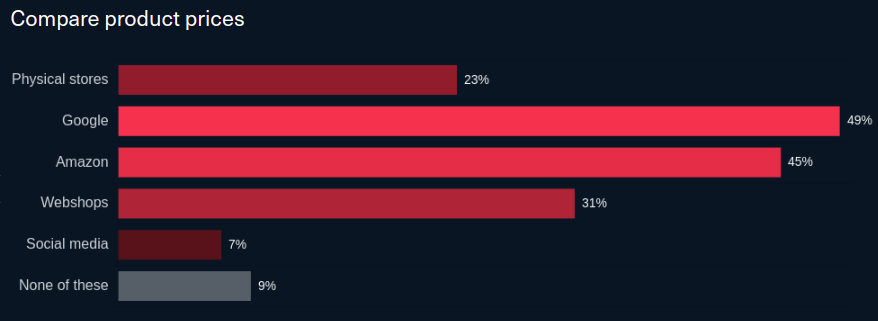ROPO (Research online, Purchase offline) & Reverse ROPO and their implications for retailers
- 26 November 2021
Access to information about product prices, reviews and specifications has never been as easy as it is today. Almost no customer leaves his home today without a smartphone in his pocket, ready to quickly check information about product offers on the internet. What are the ROPO & reverse ROPO effects? Where do customers look for product inspiration and product prices?
What is ROPO (Research online, Purchase offline)?
ROPO is a buying behaviour where customers check information about a product online before making a purchase in a physical store. The other names of the phenomenon also describe this trend quite well – ROPO is sometimes referred to as “research online, buy offline”, “online-to-store” or “webrooming”. The last-mentioned one emphasises that it’s the opposite of showrooming – purchasing products online after you checked the product in a brick-and-mortar store.
The scale of this trend was well shown in a report published by Google back in 2011. It proved that 80% of physical stores’ customers research online before the purchase.
What does it look like in practice? A customer visits a brick-and-mortar store, finds a product that interests him and then checks opinions, prices and product comparisons online. Sometimes the research is done before the visit.
Click & collect and ROPO
Sometimes, together with the research about the product, customers already “book” a product by choosing a click & collect delivery option. Click & collect means ordering a product online and then picking it up at store. The visit in a physical store is an opportunity to make the final check of the product. For sellers, on the other hand, it’s a good moment for cross-selling. According to Ernsting’s Family study from 2016, 31% of click & collect customers bought additional products during the pick up.
Click & collect for higher-priced products from the electronics market was commented by Karsten Holdorf, Managing Director of gap intelligence GmbH in an interview for Dealvo:
Click-and-collect implies that you already made your commitment to the purchase. That you already made the decision that you want to buy this specific Samsung TV. Before you buy it, you want to see with your own eyes whether the resolution or the picture quality are as impressive as the manufacturer wants you to believe. And it’s something you can’t do online. You have to go to the store. And when you are there, you can check the picture quality, you can navigate through the menu, and you can also discuss your requirements with the salesperson.
You can download the full interview with Karsten Holdorf about trends in the retail industry, shopping locally and modern ways of promotion by filling the form below:
What is Reverse ROPO?
Reverse ROPO, as its name suggests, is an effect which is opposite to ROPO – it means Research Offline, Purchase Online. The reason for such behaviour is the tendency among many retailers to offer lower prices online than offline. That’s why customers check a product in a physical store to make sure it meets their needs and then purchase it at a lower price online.
What is the difference for customers between researching online and offline? Why would customers go to physical stores to check products they want to purchase? What are the key elements they look for online? Karsten Holdorf explains this phenomenon in an interview for Dealavo:
E-commerce is always mostly price-driven. That’s because you have nearly unlimited choice. You can go on, let’s say, Idealo, sort the offers by the price and you will probably pick the first one that you trust. The advantage of offline, on the other hand, is the possibility of trying and presenting the product. And it’s especially true for the high-priced products, for which the recommendation, pre-sale and after-sale service are particularly important.
What is more common – ROPO or Reverse ROPO?
The answer to this question depends on many factors – i.a. the industry in which an online shop operates.
A good starting point, however, is by analyzing where customers look for product inspiration – online or offline?
The report published by iPaper & Epinion (and analyzed in our article Where do online shoppers look for product inspiration? Best ways to drive traffic to your online store) shows that customers look for product inspiration online. 63% of respondents admit to doing it often. What’s more, 46% of customers often buy products based on inspiration they get online.
The most common website to get inspiration from is Amazon – as you can see on the graphic below, 51% of respondents get inspiration from there:

Source: The Behavior of Online Shoppers Survey 2021 | iPaper & Epinion
Where do customers compare product prices?
The ROPO effect shows that customers look for information about products online – including information about prices. Which websites do they use for this purpose?
In our article we analyzed the results of a survey performed among online shoppers. One of the questions was about the sources of information about the products prices. 49% of respondents admitted to use Google to compare product prices. Amazon’s popularity for this purpose is slightly lower – it is used to compare prices by 45% of respondents:

Source: The Behavior of Online Shoppers Survey 2021 | iPaper & Epinion
If you want to track prices in these channels to compare your offer’s attractiveness (both online and offline), you can use a price tracking tool. Download our ebook to learn more about price management in e-commerce:
ROPO and Reverse ROPO – summary for retailers
Regardless of whether you sell online or offline, you should be aware that customers probably look for information about product specifications, reviews and prices in different channels as well. That’s why you should design a proper multichannel strategy that fits your product range and marketing.